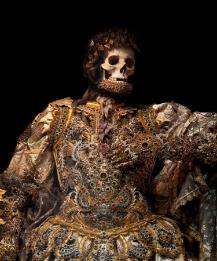Myths and Counter-Myths: Interpreting Roman Catacombs in the Seventeenth Century

Thursday 21 February 2019, 5.15PM
Speaker(s): Ingo Herklotz (History of Art, University of Marburg)
CREMS Research Seminar
New interest in the Roman catacombs arose soon after the chance discovery of the so-called cemetery of Priscilla in 1578. More than being the object of scholarly investigation the subterranean burial-grounds were soon used as a weapon in religious controversies. Following medieval legends Roman authorities proclaimed the catacombs to have been the hiding-places of the early Christian community when still under pagan persecution. They were declared to have been used exclusively by Christians and to contain uncountable graves of martyrs. Both these myths reflect essentially contemporary preoccupations. Since the French wars of religion a sharp controversy about the segregation of burials of Catholics and non-Catholics had been going on, and the worship of martyrs and their relics had gained tremendous new support by Counter-Reformation attempts to renew popular piety in Italy and abroad. It took almost a hundred years until protestant writers from England and France developed a trenchant and successful counter-myth. In their polemic view the catacombs had initially been laid out for slaves and the very poor of Roman society and had been passed over to Christians only at a later point, so that the alleged tombs of martyrs, more often than not, had nothing to do with the honoured heroes of the Christian past. Despite new approaches to the catacombs during the 19th and 20th centuries, up to the present day the controversy outlined has not been entirely settled.
Prof. Dr. Ingo Herklotz is a Professor of Italian Art History at the University of Marburg. He has research interests in the representation of art in the Middles Ages and its reception since the 16th century; in particular funerary monuments, palace decorations and image propaganda. He is currently working on two books. One is on early Christian monuments from the 16th to the 18th centuries, their foruna between popular piety, myth-creation and scholarly investigation. His second book is on Richard Krautheimer in Germany (1925-1933) and deals with architectural history, nationalism and "Jewish identities" in Weimar and early Nazi Germay.
Location: BS/008 Berrick Saul Building
Admission: All Welcome!
Email: crems-enquiries@york.ac.uk
